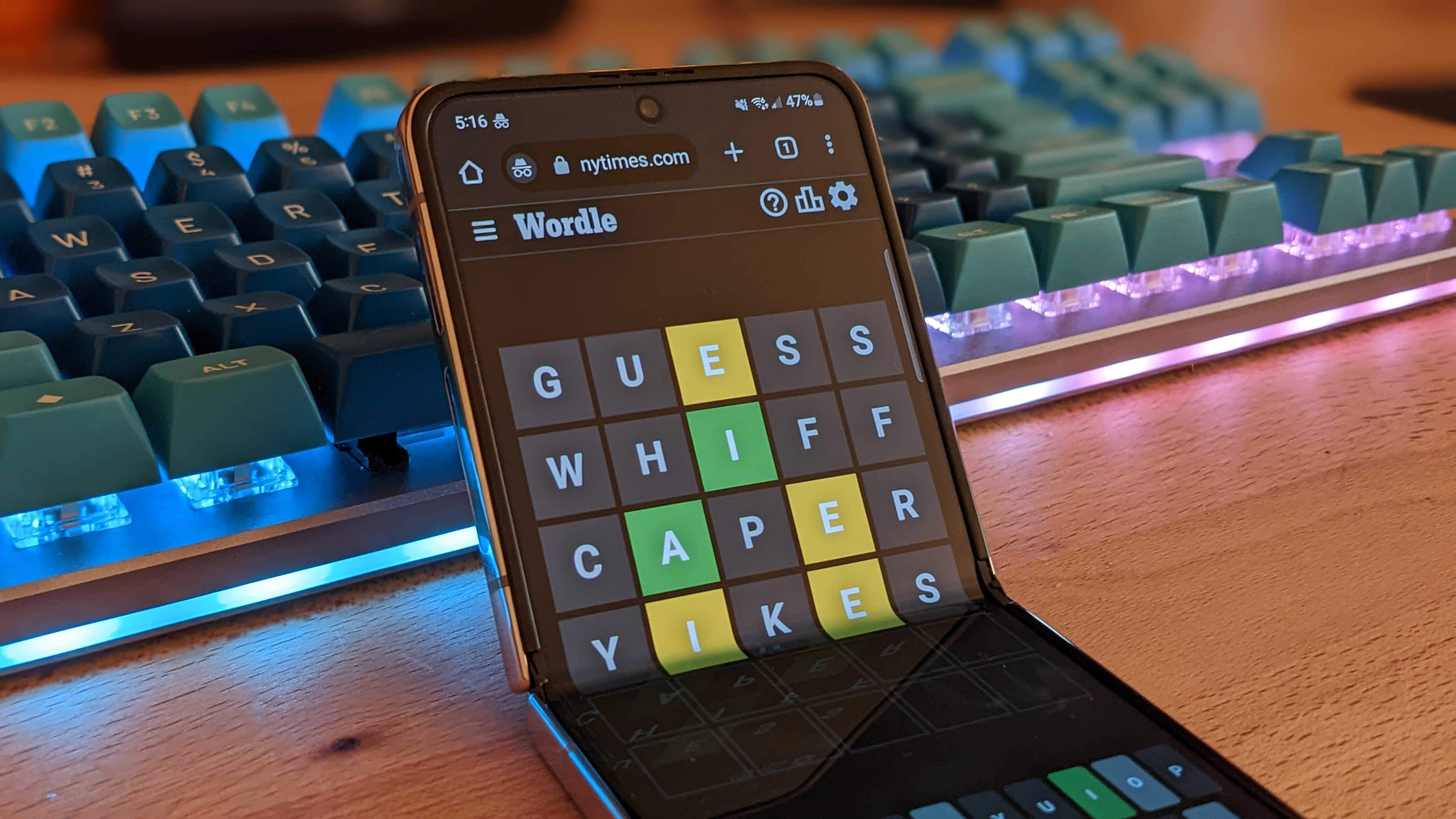
The Razer Basilisk V3 Pro 35K Refreshes An Already-Great Ergonomic Mouse
I imagine it’s not too difficult to put out a great mouse when you essentially build the same one with some upgraded parts. So, it’s no surprise that the Razer Basilisk V3 Pro 35K is an all-around banger since it’s nearly identical to its V3 Pro (non-35K) counterpart. By and large, it’s a rather minor refresh, but it’d be a slam dunk to go with the 35K version if pricing is equal. This new model has a better battery, scroll wheel, and optical sensor which enables a few new features that can be useful from a productivity standpoint. If you’re rocking the previous Basilisk, you can probably skip this one. But if you’re in the market (and willing to shell out top dollar) for a mouse that’s suited for most gaming scenarios and can also be a comfortable workhorse, the Basilisk V3 Pro 35K is what you’re looking for.
Razer Basilisk V3 Pro 35K – Design and Features
Unlike the recent Viper V3 and Deathadder V3, Razer went to its signature flashy but tasteful aesthetic with the Razer Basilisk V3 Pro. It sports Chroma RGB with a continuous light strip that lines the base of the mouse for a nice underglow effect as well as RGB lighting for the Razer logo and scroll wheel. With 13 separate lighting zones, you can customize the RGB profile quite extensively.
As far as ergonomics go, this is a mouse meant for palm grips. It’s not as big as I would expect from an ergonomic-minded mouse, but its weight and the design of its contours definitely make sense for what it’s going for. Coming in at 112g / 3.95oz, it’s on the heavier side and you will not be whipping this thing around like you would a Viper or Deathadder, both of which are roughly half the weight of the Basilisk. Because of this, fingertip and claw grips aren’t exactly comfortable – however, once I settled into the right positioning with a palm grip, the Basilisk felt fantastic to use.
Looking to upgrade your keyboard, too?
Check out our roundup of the best gaming keyboards!
The textured and rubberized material on the left and right sides of the mouse helped maintain control while not feeling quite as sticky as the smooth-touch texture of other Razer mice. It’s another aspect that pushes you toward a palm grip since my fingertips weren’t enough to make the mouse feel secure while swiping it across my desk mat. The important thing about the Basilisk is the wide base that creates a sort of platform for my thumb to rest flat along the side of the mouse, further making a palm grip easy.
There are two major features of the Basilisk that distinguish it from a functionality perspective. The first is the four-way “HyperScroll Tilt Wheel”, Razer’s fancy name for its scroll wheel. You can push it left or right allowing for extra inputs in addition to the traditional scroll wheel button when you press it downward, much like the Turtle Beach Kone II Air. It’s very easy to actuate so it’s convenient to use as extra buttons yet not so light to the touch that you’ll accidentally hit it in either direction. The wheel also has something called Smart-Reel, which automatically switches the scroll wheel to free-scrolling (bypassing the incremental notches) when spun at a certain speed. This is neat in theory but I don’t find it particularly useful in practice – if you’re scrolling through hundreds of pages of PDFs, though, this could come in handy, further making the case for this to be a better work mouse.
The other big feature is the multi-function trigger on the left side of the mouse that sits at the tip of the thumb groove. It’s a small square button that can be programmed to any function you want. It’s great to use for HyperShift, which when held down, changes all the mouse buttons to alternate functions, essentially letting each of them double-up on inputs. This is great for mapping extra shortcuts for video and photo editing, for example, but also comes in handy for games with complex control schemes. Turtle Beach has a similar feature on its Kone II mice, and while I find it easier to reach, the Basilisk’s version stays out of the way so as to not get hit and activate on accident.
The rest of the Basilisk V3 Pro 35K is either par for the course (a good thing in Razer’s case) or a minor upgrade that doesn’t noticeably change the mouse. The “35K” in the name indicates the updated Focus Pro optical sensor that now has a 35,000 DPI ceiling (up from the 30,000 DPI on the, well, Focus Pro 30K). On paper, it’s a more accurate sensor, but the difference is statistically insignificant. If you’re in the Razer ecosystem already, the Basilisk also has multi-device support to free up USB ports and run multiple HyperSpeed peripherals through one dongle.
Razer Basilisk V3 Pro 35K – Software and Battery Life
Like any Razer product, you’ll be customizing the Basilisk V3 Pro 35K through Razer Synapse and it offers a plethora of options for fine-tuning. Here, you can set Chroma RGB profiles, map each mouse button’s alternative HyperShift function, customize the multi-function trigger, configure DPI settings, enable Smart-Reel, and more. Especially with Synapse 4, peripheral customization has gotten robust and for a mouse like the Basilisk that packs a ton of utility, it’s nice to have a software suite that really helps get the most out of your mouse.
One of the perks of this refresh is the better battery. The previous Basilisk was no slouch, but the V3 Pro 35K is rated to last upwards of 140 hours through 2.4GHz connectivity under ideal conditions (and around 200 hours with Bluetooth). In the time I’ve had it, I’ve used it via Bluetooth for a week as my work mouse and three days as my primary gaming mouse with 2.4GHz HyperSpeed, it only started to glow red from low battery on the third day, and this was with RGB at full blast the entire time.
Razer Basilisk V3 Pro 35K – Performance
As a daily driver, the Basilisk V3 Pro 35K is fantastic, which can also be said of the previous model since they’re both so similar in design. I tend to prefer a lightweight mouse to take on the go when working remotely, such as the Turtle Beach Pure Air, but the Basilisk is going to give you a much more robust experience given all its bells and whistles. Synapse makes its useful features easy to customize, and its ergonomic design makes it comfortable to use day in and day out. I do wish it was bigger so it could better fill my palm area when holding it, but it’s a rather minor gripe for what’s otherwise a well-designed mouse.
If you’re deep in competitive shooters, however, the Basilisk V3 Pro 35K isn’t going to be the best mouse for you. Its sensor and accuracy are certainly up to the task, but its heavier weight and lack of grip versatility means it’s nowhere near as nimble as the more FPS-focused mice in Razer’s catalog. I gave it a whirl in my usual ranked matches of Counter-Strike 2, and I was confident in holding corners and peeking to land precise shots, but when things got hectic and required me to flick the mouse to a target in a moment’s notice, I definitely felt the Basilisk weighing me down.
However, as I played the new Patch 7.1 content in Final Fantasy XIV, having the Basilisk made long sessions easy on my hands. By having proper ergonomics for a palm grip, there was less pressure on my fingertips throughout my time playing. The functionality of the four-way scroll wheel and HyperShift set on the mouse itself let me map a few key actions in ways that were easier to activate or access. While the new bindings took a while to get used to, enough reps and time with it highlighted how something like an MMORPG can benefit greatly from a mouse of this style.
The Focus Pro 35K is a technically better sensor with a higher DPI ceiling, but you’re not going to notice a tangible difference since the 30K version already performed wonderfully. While the Basilisk uses the same switches for left and right click as the other Razer mice I’ve reviewed, I found the clicks on this mouse to be a bit more squishy, making rapid clicking a bit tougher. It’s certainly not a dealbreaker because they feel just fine, but I did like the firmness of the Viper and Deathadder. I did like the tactility of the elongated side thumb buttons, and they felt noticeably better to use than most, if not all, mice I’ve reviewed in recent years.








